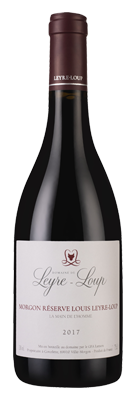Filter by
- Rare chance to enjoy fine Morgon Beaujolais Cru with seven years' age. Silky, complex and fine.$58.00 RRPfrom $49.99 when you mix 12+
- 93pt “delightfully drinkable” and rare Australian Gamay from the Adelaide Hills.$34.00 RRPfrom $26.99 when you mix 12+
- A fabulously fresh, Gold-winning take on Beaujolais... glorious Adelaide Hills Gamay from RedHeads$36.00 RRPfrom $29.99 when you mix 12+
- Showing (1 to 3 of 3)
1
Page 1 of 1
Wine FAQs
What is Gamay?
Gamay is one of France’s oldest grape varieties, producing light, fruity red wines. The most prized Gamay wines come from the Beaujolais region of France and are often labelled simply as Beaujolais wine. These wines include the light and refreshing Beaujolais Nouveau and the more complex and premium Cru Beaujolais.
The purple Gamay grapes are also grown here in Australia, where Gamay wines are increasing in popularity. Regions including Yarra Valley, Mornington Peninsula and Adelaide Hills have cool climates similar to Beaujolais, which makes them ideal for growing this grape variety.
Discover our selection of premium Gamay wines and find your new favourite red.
Where is Gamay grown?
Gamay is native to the Burgundy region of France, with a history that dates back to the 14th century. Once the region’s key grape, it was superseded by the ever-popular Pinot Noir. However, Gamay found a new home in the nearby Beaujolais region. Today, Gamay is Beaujolais’ signature variety, producing wine in a variety of different styles, from the fruity Beaujolais Nouveau to the complex Cru Beaujolais.
Gamay can also be found thriving in the Loire Valley, but in smaller amounts, and is used to create the region’s red and rosé wines.
Gamay is a versatile, adaptable grape, which can thrive in a variety of climates and soils. Gamay vines outside France can be found in the Yarra Valley, Mornington Peninsula and Adelaide Hills in Australia. It’s also grown in Canada, Switzerland and the United States, particularly Oregon and the Niagara Peninsula.
What does Gamay wine taste like?
As Gamay is grown worldwide, the style and character of the wine can vary. Australian Gamay is typically fresh and light, with red fruit flavours – think strawberries, cherries and raspberries. Many Australian winemakers are also experimenting with new techniques to create unique expressions of the grape. Some age the wine in oak, which adds complexity. Depending on the winemaking process, some wines may also have spicier notes.
Beaujolais wines made from Gamay often have a slight tartness. These wines usually have moderate acidity, low tannins and are known for their vibrant, juicy character. Typical tasting notes can include raspberry, red cherry and cranberry, often accompanied by delicious and somewhat unusual hints of banana or pear drops. The aromas can include deep hints of lilac and violets.
Beaujolais Nouveau, the youngest style of Gamay, is released just weeks after harvest. These wines are extremely light and fruity, often characterised by their distinct note of boiled sweets, resulting from a carbonic maceration process used in their production.
On the other hand, Beaujolais’ Grand Cru wines, from regions such as Morgon or Moulin-à-Vent, can be fairly complex. These wines maintain Gamay’s fruit-forward nature, but they can also develop earthier notes like forest floor and mushroom, along with floral and spice undertones. These wines have more body and structure, and they can age for several years.
Gamay wines from the Loire Valley are slightly lighter and more tart in flavour than those from Beaujolais.
Canada’s Niagara Peninsula and Oregon produce Gamay wines which can have a certain mineral or earthy quality due to the cooler climate and different soils of these regions.
What food pairs well with Gamay wine?
Gamay wines, with their light body and bright fruit flavours, pair well with a range of foods:
- Roast chicken – The wine’s acidity and fruitiness balance the savoury flavours of the chicken, and its light body won’t overwhelm the dish.
- Sausages – Gamay’s bright fruity flavours and acidity complement the spiciness and fattiness of sausages.
- Grilled salmon – The light body and red fruit flavours of Gamay can stand up to the rich, fatty flavours of salmon without overpowering it.
- Brie-style cheese – The creamy, rich texture and flavours of Brie-style cheeses are well-balanced by Gamay’s acidity and bright fruitiness.
- Pork tenderloin – Gamay’s light-to-medium body and fresh red fruit flavours won’t overwhelm the delicate pork flavours, while its acidity cuts through the meat’s richness.
How to serve Gamay
Gamay is best served at around 12-13°C to maximise its refreshing acidity and fresh fruit flavours. If served warmer, the alcohol burn will overwhelm the wine’s more delicate, fruit flavours. Serve it too cold, and you risk muting its complex character and aromas.
Opt for a Burgundy wine glass to serve your Gamay wine. Its wider bowl allows the wine to breathe and release all its aromas. The narrower rim directs the wine to the tip of your tongue when you sip so that you can appreciate Gamay’s bright acidity and fresh fruit flavours.






